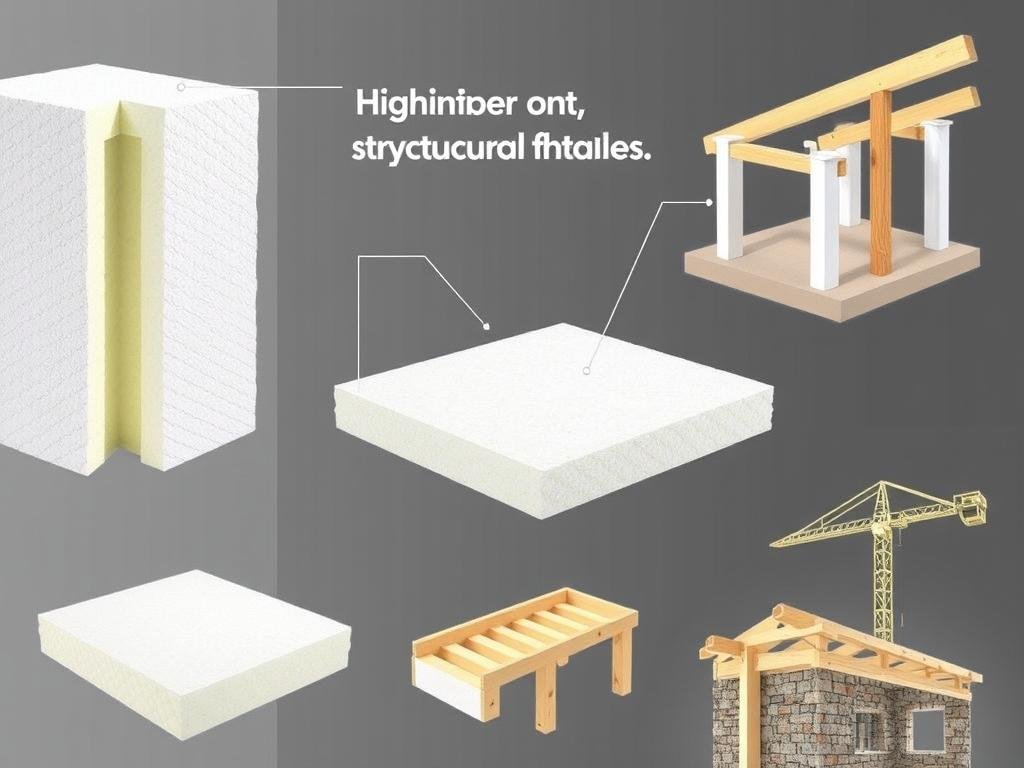Polyurethane, a versatile polymer, is composed of organic units joined by carbamate links. Its unique chemical structure allows for a wide range of applications, from soft cushioning to rigid structural components.
The mass per unit volume of polyurethane, or its density, plays a crucial role in determining its physical properties and suitability for specific uses. Understanding the differences between flexible and rigid foams is essential for making informed decisions in various industries.
By examining the chemical composition, manufacturing processes, and structural properties of polyurethane materials, we can gain insight into how density variations impact their performance characteristics.
Understanding Polyurethane Materials
Understanding polyurethane materials requires a deep dive into their composition, history, and production processes. Polyurethane is a versatile polymer that has been widely used in various industries.
What is Polyurethane?
Polyurethane is a type of polymer that is formed by the reaction of polyols with diisocyanates. This reaction creates a material that can be tailored to have specific properties, making it suitable for a wide range of applications.
Chemical Composition and Structure
The chemical composition of polyurethane is characterized by the presence of urethane groups. The structure of polyurethane can vary depending on the type of polyol and diisocyanate used, as well as the presence of other additives. This variability allows for the creation of different types of polyurethane foams and materials.
Historical Development of Polyurethane
The history of polyurethane began in 1937 when Otto Bayer and his team first synthesized these polymers. Early development focused on the production of fibers and flexible foams, with limited applications as aircraft coatings during World War II. The commercial availability of polyisocyanates in 1952 marked a significant breakthrough, enabling the production of flexible polyurethane foam using toluene diisocyanate (TDI) and polyester polyols.
The introduction of polyether polyols in the mid-1950s further revolutionized the industry, providing cheaper and more water-resistant materials. Throughout the decades, advancements in polyurethane chemistry and manufacturing processes have expanded its range of applications and improved material properties.
The Science of Polyurethane Density
Understanding the density of polyurethane materials is crucial for determining their suitability for various applications. Density is a fundamental property that affects the performance, quality, and usability of these materials.
Defining Density in Polyurethane Materials
Density in polyurethane materials refers to the mass per unit volume of the foam. It is typically measured in kilograms per cubic meter (kg/m³). The density of polyurethane foam is calculated using the formula ρ=M/V, where ρ is the density, M is the mass, and V is the volume. This measurement is critical as it influences the material’s properties, such as its insulation capabilities, compressive strength, and durability.
Feed, Bulk, and Core Density Explained
In the context of polyurethane foam, density can be categorized into different types, including feed density, bulk density, and core density. Feed density refers to the density of the raw materials used to produce the foam, while bulk density is the overall density of the foam, including any airspaces or voids. Core density, on the other hand, is the density of the foam material itself, excluding any external factors. Understanding these different density measurements is essential for optimizing the production process and ensuring the quality of the final product.
Methods for Measuring Polyurethane Density
There are several methods for measuring polyurethane density, including the use of national standards such as GBT6343, ASTM D3574, and ISO845. The most common technique involves cutting a regular geometric sample from the foam, measuring its dimensions to calculate volume, weighing it to determine mass, and then calculating density using the formula ρ=M/V. For irregular foam samples, the Archimedes principle can be employed by measuring the volume of water displaced by the foam sample. Advanced laboratory techniques may also employ specialized equipment such as gas pycnometers for highly accurate density measurements.
As noted by industry experts, “The accurate measurement of polyurethane density is critical for ensuring the quality and performance of the material.” This highlights the importance of using reliable and consistent methods for measuring density.
Factors Affecting Polyurethane Density
Understanding the factors that influence polyurethane density is crucial for its application. The density of polyurethane foam is a critical property that affects its performance in various uses.
Raw Materials and Their Impact
The choice of raw materials significantly influences the density of polyurethane products. Different polyols and isocyanates have varying molecular weights and structures, which impact the final density of the foam. For instance, using higher molecular weight polyols can result in a lower density foam.
Blowing Agents and Their Role
Blowing agents play a crucial role in determining the density of polyurethane foam. They generate gases that expand the foam, creating its cellular structure. The type and amount of blowing agent used directly affect the foam’s density and cell structure.
Chemical Additives and Catalysts
Chemical additives and catalysts are essential in controlling the reaction kinetics of polyurethane formation. Catalysts, such as tertiary amine and alkyl tin compounds, influence both the gelling and blowing reactions, thereby affecting the final density and cell structure of the foam. Surfactants stabilize gas bubbles, controlling cell size and uniformity, which significantly impacts the consistency of density throughout the foam.
The balance between gelling and blowing catalysts is carefully managed to control the timing of polymer solidification relative to gas expansion, directly impacting the final density and cell structure. Specialized additives like cell openers can create pathways between cells in flexible foams, affecting not only the cell structure but also potentially reducing density by increasing the open-cell content.
Cell Structure and Its Relationship to Density
Understanding the relationship between cell structure and density is essential for optimizing polyurethane foam properties. The cell structure of polyurethane foam is a complex arrangement of cells that can be either open or closed, and this structure plays a significant role in determining the foam’s density.
Open-Cell vs. Closed-Cell Structures
Polyurethane foams can have either open-cell or closed-cell structures. Open-cell foams have cells that are interconnected, allowing for airflow and flexibility, whereas closed-cell foams have cells that are sealed, providing better insulation and rigidity. The type of cell structure is crucial in determining the density of the foam.

How Cell Structure Influences Density
The cell structure of polyurethane foam directly influences its density. Several factors contribute to this relationship:
- Cell size: Smaller cells typically result in higher density foams as more polymer material is distributed throughout the same volume.
- The ratio of polymer to gas: A higher polymer content relative to gas results in higher density materials.
- Cell wall thickness: Thicker cell walls contain more polymer material, contributing to higher density foams.
- Uniformity of cell structure: More uniform cell structures result in more consistent density properties.
The relationship between cell structure and density is not always straightforward, as manufacturing techniques can produce high-density open-cell foams or relatively lower-density closed-cell foams depending on specific formulation and processing parameters.
Flexible Polyurethane Foam Characteristics
Characterized by their elastomeric properties, flexible polyurethane foams are widely utilized in applications requiring flexibility, durability, and comfort. The unique structure of these foams, derived from the phase separation of hard and soft copolymer segments, enables them to provide both support and elasticity.
Density Range for Flexible Polyurethane
Flexible polyurethane foams typically exhibit a density range that is crucial for their application in various products. The density of these foams can vary, influencing their performance and suitability for different uses. Generally, the density range for flexible polyurethane foams is between 1.5 to 3.0 pounds per cubic foot (pcf), with some formulations extending beyond this range for specialized applications.
Physical Properties of Flexible Foam
The physical properties of flexible polyurethane foams, such as their tensile strength, tear resistance, and compression set, are critical in determining their suitability for various applications. These properties are influenced by the foam’s density, cell structure, and formulation. For instance, higher density foams tend to have better tensile and tear strength, making them more durable in demanding applications.
As noted by industry experts, “The cell structure of flexible polyurethane foams plays a significant role in their physical properties, with open-cell structures being more prevalent in lower density foams and closed-cell structures in higher density formulations.” The physical properties of these foams can be tailored through adjustments in their formulation, allowing for a wide range of performance characteristics.
Mechanical Behavior Under Stress
Flexible polyurethane foams display a characteristic stress-strain curve with three distinct regions: an initial linear elastic region, followed by a plateau region where cell walls buckle, and finally a densification region where the foam compresses significantly. The compression force deflection (CFD) or indentation force deflection (IFD) values, which measure the force required to compress the foam by a specific percentage, generally increase with density.
- The mechanical behavior of flexible foams under stress is also influenced by their hysteresis, which is the difference between loading and unloading energy.
- Fatigue resistance in flexible polyurethane foams generally improves with increasing density, with higher density foams maintaining their support properties over more compression cycles.
Rigid Polyurethane Foam Characteristics
Rigid polyurethane foams exhibit a range of characteristics that make them suitable for demanding applications. Their unique properties are influenced by their chemical composition and structure.
Density Range for Rigid Polyurethane
The density of rigid polyurethane foams typically ranges from 1.5 to 12 pounds per cubic foot (pcf), with some specialty foams having densities even higher. This density range allows for a variety of applications, from insulation to structural components.
| Density (pcf) | Typical Applications |
|---|---|
| 1.5-3 | Insulation, packaging |
| 3-6 | Structural panels, construction |
| 6-12 | High-strength structural applications |
Physical Properties of Rigid Foam
Rigid polyurethane foams possess excellent physical properties, including high compressive strength, low thermal conductivity, and good dimensional stability. The closed-cell structure of these foams contributes to their superior insulation capabilities and resistance to moisture absorption.
The physical properties of rigid polyurethane foams are influenced by their chemical composition. As the hard segments are covalently coupled to the soft segments, they inhibit plastic flow of the polymer chains, thus creating elastomeric resiliency.
Structural Integrity and Load-Bearing Capacity
The load-bearing capacity of rigid polyurethane foams increases exponentially with density. High-density variants are capable of supporting substantial static and dynamic loads without significant deformation. Key characteristics include:
- Compressive creep resistance improves significantly with increasing density.
- Shear strength increases proportionally with density, allowing higher density foams to resist forces that would cause lower density variants to fail.
- Impact resistance correlates strongly with density, with higher density foams able to absorb and dissipate impact energy more effectively.
Comparing Polyurethane Density Variants
Understanding the differences between various polyurethane density variants is crucial for selecting the right material for specific applications. The characteristics of these variants can significantly impact their performance and suitability for different uses.
Density vs. Firmness: Common Misconceptions
Many assume that density and firmness are directly correlated in polyurethane foams. However, density refers to the mass per unit volume, while firmness is related to the material’s resistance to compression. High-density foams can be either firm or soft, depending on their formulation and cell structure. It’s essential to distinguish between these properties to choose the right material.
Compression and Recovery Properties
The compression and recovery properties of polyurethane foams vary significantly with density. Higher density foams generally exhibit better resistance to compression and faster recovery times. This is because the denser material has a more robust cell structure, allowing it to withstand stress and return to its original shape more effectively.
Durability and Lifespan Differences
Durability is a critical factor in the lifespan of polyurethane foams. Higher density variants typically offer greater durability due to their increased resistance to fatigue, abrasion, and hydrolytic degradation. The improved durability of high-density foams makes them more suitable for applications where the material is subject to heavy use or harsh conditions.
In summary, the differences in density among polyurethane variants significantly impact their properties and performance. By understanding these differences, users can select the most appropriate material for their specific needs, ensuring optimal performance and longevity.
Thermal Properties Across Density Spectrum
Density plays a crucial role in determining the thermal characteristics of polyurethane foams. The thermal properties of these materials are essential for various applications, ranging from insulation in buildings to cushioning in furniture.
Insulation Capabilities by Density
The insulation capabilities of polyurethane foams are significantly affected by their density. Generally, higher density foams have improved thermal insulation due to their more robust structure and lower air permeability. Low-density flexible polyurethane foams, while not as effective in insulation, still offer some level of thermal resistance. The thermal conductivity of these foams varies, with higher density variants typically exhibiting lower thermal conductivity, thus better insulation properties.
For instance, high-density rigid polyurethane foams are often used in construction for their excellent insulation capabilities, maintaining a stable temperature within buildings across varying external conditions.
Temperature Resistance and Service Range
The service temperature range of polyurethane foams varies significantly across the density spectrum. Higher density variants generally offer wider operating temperature ranges due to their more robust polymer structure. Low-density flexible polyurethane foams typically maintain their functional properties between -40°F and 180°F (-40°C to 82°C), with possible temporary excursions beyond this range.
In contrast, high-density rigid polyurethane foams can withstand continuous service temperatures from -100°F to 250°F (-73°C to 121°C), with some specialized formulations extending this range further. The heat distortion temperature, at which the foam begins to deform under load, increases with density in both flexible and rigid polyurethane variants, indicating improved thermal stability.
Applications of Low-Density Polyurethane Foam

The unique properties of low-density polyurethane foam make it suitable for multiple applications. Its lightweight, shock-absorbing capabilities, and ability to be custom-molded make it an ideal material for various industries.
Cushioning and Comfort Products
Low-density polyurethane foam is widely used in cushioning and comfort products due to its softness and ability to conform to different shapes. It is commonly found in mattresses, pillows, and furniture cushions, providing comfort and support.
Filtration and Acoustic Applications
The open-cell structure of low-density polyurethane foam makes it suitable for filtration applications, such as air and liquid filters. It is also used in acoustic applications to reduce noise due to its sound-absorbing properties.
Packaging and Protection Uses
Low-density polyurethane foam excels in packaging applications due to its excellent shock absorption and lightweight nature. It is used to protect sensitive products during shipping and handling, and can be custom-cut to fit specific items, making it ideal for electronic device packaging, medical equipment, and premium consumer products.
Applications of High-Density Polyurethane Foam

The versatility of high-density polyurethane foam makes it suitable for various industrial and commercial uses. Its unique properties, such as high strength, durability, and resistance to various environmental factors, make it an ideal material for demanding applications.
Structural and Load-Bearing Applications
High-density polyurethane foams are used in structural and load-bearing applications due to their excellent mechanical properties. They are utilized in the manufacture of components that require high strength and durability, such as in construction and industrial equipment.
Insulation and Construction Uses
In the construction sector, high-density polyurethane foams are valued for their insulation properties. They are used in building insulation, reducing energy consumption and enhancing building efficiency. Their durability also makes them suitable for long-term construction applications.
Industrial and Automotive Applications
High-density polyurethane foams find extensive use in automotive manufacturing for structural components, energy absorption systems, and NVH control elements. They are also used in industrial equipment components, such as rollers and wheels, due to their wear resistance and load-bearing capacity.
Other notable applications include marine uses, where high-density closed-cell polyurethane foams provide water resistance and durability for flotation, insulation, and structural components in boats and offshore structures. Specialized industrial applications also benefit from high-density foam tooling for composite manufacturing and custom-engineered components.
Manufacturing Processes and Density Control
Manufacturing processes play a vital role in controlling the density of polyurethane foams. The density of these foams is a critical parameter that affects their performance in various applications.
Continuous Production Methods
Continuous production methods are widely used in the manufacture of polyurethane foams. These methods involve the continuous mixing and dispensing of raw materials onto a conveyor belt, where the foam rises and cures. The density of the foam is controlled by adjusting the formulation, mixing ratio, and processing conditions. In-line density monitoring systems, utilizing technologies such as gamma ray attenuation or ultrasonic measurement, provide real-time feedback on foam density during production.
Batch Processing Techniques
Batch processing techniques are also employed, particularly for specialized or small-scale productions. In batch processing, raw materials are mixed in a specific ratio and poured into a mold, where the foam expands and cures. The density of the foam is controlled by adjusting the formulation and processing conditions. Laboratory testing protocols, following standardized methods such as ASTM D3574 for flexible foams and ASTM D1622 for rigid foams, ensure consistent density measurements.
Quality Control for Consistent Density
Quality control is crucial to ensure consistent density throughout production runs. Techniques such as core sampling, non-destructive testing, and statistical process control are used to monitor and adjust the process. Advanced manufacturing facilities implement closed-loop control systems that automatically adjust process parameters based on real-time density measurements.
| Method | Description | Application |
|---|---|---|
| Continuous Production | Continuous mixing and dispensing of raw materials | Large-scale production |
| Batch Processing | Mixing raw materials in a specific ratio and pouring into a mold | Specialized or small-scale production |
| In-line Density Monitoring | Real-time feedback on foam density using gamma ray attenuation or ultrasonic measurement | Continuous production |
Environmental Considerations of Different Densities
Polyurethane foams, with their diverse density options, present a range of environmental challenges and opportunities. The production, use, and disposal of these materials have significant environmental implications that vary with density.
Sustainability of Raw Materials
The raw materials used in polyurethane foam production have a substantial environmental impact. The sourcing of polyols and isocyanates, the primary components of polyurethane, involves petrochemical feedstocks, which are non-renewable. Efforts to incorporate bio-based raw materials are underway, potentially reducing the environmental footprint of polyurethane foams across different densities. “The use of renewable resources in polyurethane production is a growing trend, driven by the need to reduce dependence on fossil fuels and lower greenhouse gas emissions,” notes an industry expert.
Energy Efficiency in Production
Energy efficiency during the production of polyurethane foams is crucial for minimizing their environmental impact. Manufacturers are adopting more energy-efficient processes and blowing agents with lower global warming potential (GWP) to reduce the carbon footprint of their products. The density of the foam influences the energy required for production, with lower density foams generally requiring less energy.
End-of-Life and Recycling Options
End-of-life management options for polyurethane foams vary by density. Mechanical recycling is more feasible for lower density flexible foams, which can be shredded and reprocessed into products like carpet underlayment and acoustic materials. Chemical recycling technologies, such as glycolysis and pyrolysis, can process both flexible and rigid foams, breaking them down into raw materials for new polyurethane production. Energy recovery through incineration is another common pathway, leveraging the high energy content of polyurethane. Emerging technologies, including enzymatic degradation, are being explored to improve recycling efficiency and reduce waste.
Selecting the Right Polyurethane Density
To achieve the desired performance characteristics, it is essential to select the right polyurethane density for specific use cases. The density of polyurethane foam significantly influences its properties and behavior under various conditions.
Assessment of Application Requirements
When assessing application requirements, consider the specific demands of the intended use. Different applications necessitate different density variants to ensure optimal performance. Key factors include compressive strength, thermal insulation, and cushioning characteristics.
- Compressive strength and load-bearing capacity
- Thermal insulation and temperature resistance
- Cushioning and comfort characteristics
Performance vs. Cost Considerations
Balancing performance and cost is crucial when selecting polyurethane density. Higher density foams often provide enhanced performance but at a higher cost. The optimal density meets performance requirements while minimizing unnecessary expenses, ensuring a cost-effective solution.
Testing and Validation Methods
Comprehensive testing protocols validate the selected polyurethane density. These include standardized tests for density and compression properties, accelerated aging tests, and application-specific simulations like dynamic fatigue testing. Field testing provides real-world performance data, further validating material selection.
- Standardized tests for density and compression properties
- Accelerated aging tests to predict long-term performance
- Application-specific simulations, such as dynamic fatigue testing
Future Trends in Polyurethane Density Technology
The future of polyurethane density technology is poised to revolutionize various industries with its innovative applications. As we look ahead, several key trends are emerging that will shape the development and use of polyurethane foams across different sectors.
Innovations in Bio-Based Polyurethanes
The shift towards sustainability is driving innovations in bio-based polyurethanes. These eco-friendly materials are being developed to replace traditional petroleum-based polyurethanes, offering reduced environmental impact without compromising on performance. Bio-based polyurethanes are expected to play a significant role in the future of foam production, catering to the growing demand for green technologies.
Advanced Manufacturing Techniques
Advanced manufacturing techniques are enhancing the production of polyurethane foams, allowing for more precise control over density and other critical properties. Techniques such as 3D printing and advanced molding processes are enabling the creation of complex geometries and customized foam structures, opening up new possibilities for various applications.
Emerging Applications and Requirements
Emerging applications are driving the development of specialized polyurethane foams with specific density requirements. For instance, electric vehicle battery systems require foams with precise density specifications for thermal management and crash protection. Similarly, advanced medical applications demand foams with antimicrobial properties and engineered density profiles for therapeutic support. Other emerging areas include smart building technologies, aerospace, and wearable technology, each pushing the boundaries of performance and requirements for polyurethane materials.

Conclusion
Polyurethane density is a critical material characteristic that affects foam performance, properties, and applications. The distinction between flexible and rigid foams offers a wide density spectrum for precise material selection. Understanding density and its relation to performance properties is crucial for optimizing performance and cost-effectiveness. As polyurethane chemistry and manufacturing evolve, density remains a vital specification parameter, driving innovation in foam technology. This understanding enables engineers and manufacturers to make informed decisions, ensuring the development of high-quality foam products that meet specific application requirements.
